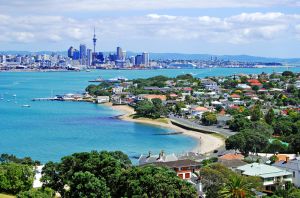
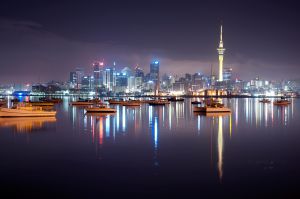
You are most likely to arrive at Aucklands International Airport which offers the widest choice of international airlines operating to New Zealand.
Auckland is our largest city and known as the City of Sails, being located on the Waitemata and Manukau Harbours and the gateway to the islands of the Hauraki Gulf. Boating is a popular pastime for many Aucklanders and visitors alike. There are numerous marinas, which offer berthing for private as well as many of the tourist and fishing charter boats.
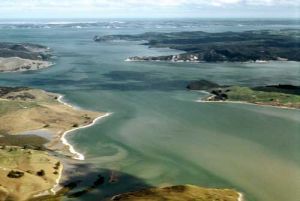
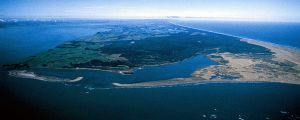
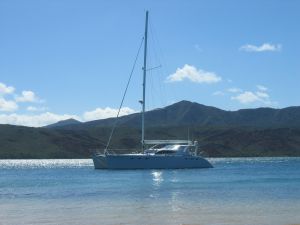
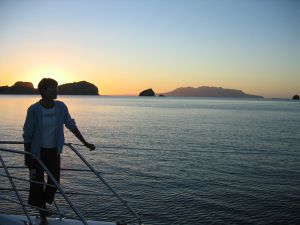
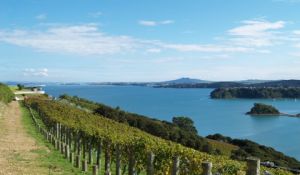
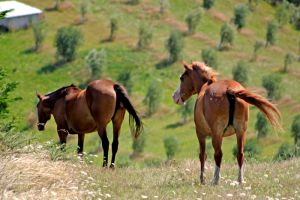
Waiheke Island is located in the Hauraki Gulf, and is the gulf's most populated island. Ferries operate on a regular schedule, the journey taking approximately 40 Minutes directly or 1 hour with stop at the North Shore suburb of Devonport.
Waiheke is one of the larger islands of the Hauraki Gulf as well as being one most populated. The island has many wineries and olive groves and has long been a celebrated hangout for artists. We can arrange tours to enjoy the best the island has to offer.
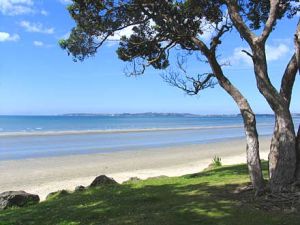
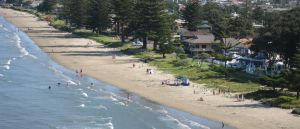
Orewa lies about 40km's north of central Auckland on Auckland's North Shore. The golden sandy beach is stunning and well worth a stop if you are passing by on your way through to Northland, or if you time to spare during your stay in Auckland.
It is a popular, safe surf and swimming beach.
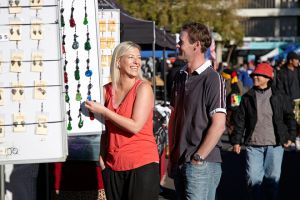
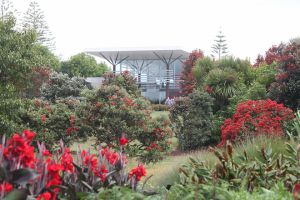
Manukau is the heart of Auckland’s south, a vibrant cosmopolitan centre and home to the largest Polynesian community in the world. There’s lots to see and do, including the bustling markets, beautiful botanical gardens, shopping and the country’s biggest theme park - Rainbow's End.
Manukau is a unique blend of urban, rural and coastal – which means lots of opportunities for fun, adventure and relaxation. It is also the home of Auckland's International and Domestic Airport
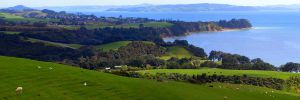

Orere Pt is a beach-side settlement approximately 1 hour south-east of downtown Auckland. As well as its early Maori settlement history, it was Bishop Samuel Marsden's first landing site in New Zealand in 1816.
The vast kauri trees have long been milled and the land is mostly used for farming these days. A close-knit settlement has grown from the original settlers, of whom many of today's local residents are related to.
The Top 10 Holiday Park is a popular holiday spot, with many visitors opting to take this more relaxed route to The Coromandel Peninsula, rather than opting for the busy freeways .
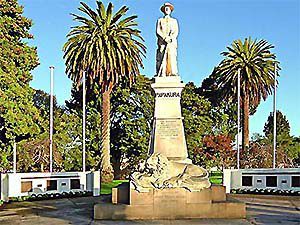
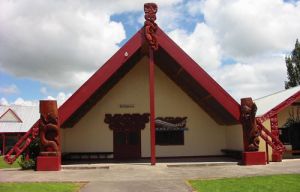
The old highway, the Great South Road, runs through Papakura, forming its main street. The road was constructed during the New Zealand Wars in the 1860s to transport supplies to the Waikato campaign between the British Army and the Maori tribes. It was guarded by armed constabulary and was a designated military road.
This area is still split between urban & rural properties but is fast becoming a growing suburb of Auckland.
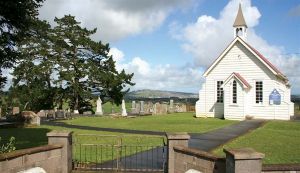
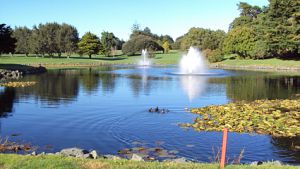
Pukekohe is a sizeable, self-contained country suburb of Auckland and has everything the local farming and horticultural community needs; it’s also a major centre for equestrian and motorsport events. The annual V8 International Supercar event, part of a championship series, is held at Pukekohe Park Raceway every April. The town’s busy centre has many cafés and restaurants. Local attractions include the Saturday morning market, golf, horse treks, a watergarden and west coast beaches. At nearby Glenbrook, rail enthusiasts operate historic steam trains for Sunday rides.
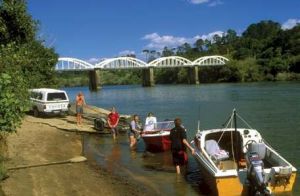
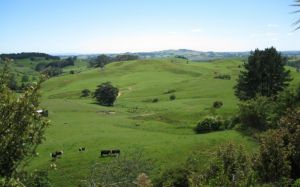
Tuakau is a small town located near the Southern Motorway, between Auckland and Hamilton, in the Waikato. Surrounding areas include; Pukekohe, Buckland, Puni, Te Kohanga, Onewhero, Pukekawa, Pokeno, Mercer and Whangarata. Nestled alongside the Waikato river Tuakau is the gateway to the Waikato once you leave Auckland City.
Water skiing is popular at Tuakau, on the Waikato River.
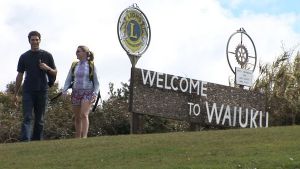
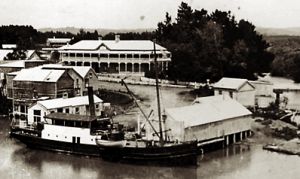
Waiuku is a country town in the Auckland Region in the North Island of New Zealand. It is located at the southern end of the Waiuku River, which is an estuarial arm of the Manukau Harbour. It is 40 kilometres southwest of Auckland city centre, and 12 kilometres north of the mouth of the Waikato River. The town serves to support local farming, and is the residence of many employees of New Zealand Steel at Glenbrook, which is four kilometres to the northeast
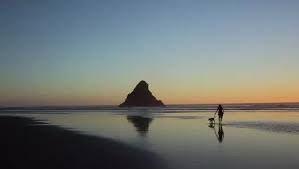
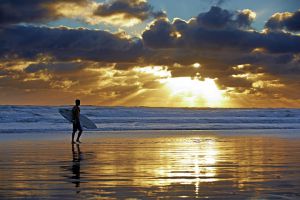
Jane Campion’s 1993 Oscar-winning film "The Piano" was filmed here and made Karekare Beach, with its stunning black-sand beach a must-see attraction.
Karekare is located west of Auckland on the coast between Whatipu in the south and Piha in the north. The drive from downtown Auckland will take approximately 50 minutes, much of it through the Waitakere Ranges' magnificent native forest . This is considered to be one of Auckland's most spectacular beaches and a wonderful wilderness area. Part of the Waitakere Ranges Regional Park, Karekare offers hiking and excellent surf.
Please Note - Swimmers are advised to only swim between the flags and when life guards are on duty as it can have dangerous currents and undertow.
Karekare waterfall is known by the Kawerau Maori tribe as ‘Te Ahoaho' or ‘pendulous white thread', and can be found just a short walk from the main beach.
The wild landscape is a magnet for photographers and visitors alike, with many talking of experiencing an overpowering feeling at this magical spot.
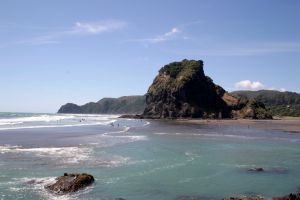
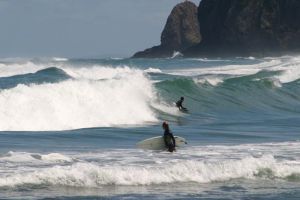
Piha Beach is one of our most popular surf beaches on Auckland’s wild west coast. The settlement of Piha has approximately 600 residents.
The dramatic black sand beach is the birthplace of surfing in New Zealand and many Aucklanders make the weekend pilgrimage to be part of this surfing legend. The surf at Piha Beach is wild and unpredictable and draws seasoned surfers as well as being a great swimming spot in summer.
During summer, the beach is patrolled by life guards.
A 2km walk along a nearby track will take you to the picturesque Kitekite Falls, where you can swim in the rock pools.
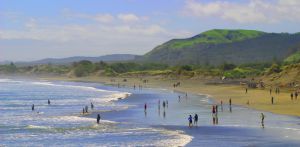
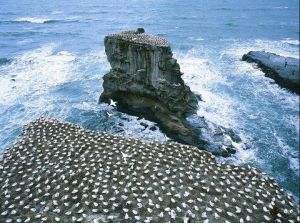
Muriwai Beach is located one hour drive west from the centre of Auckland. This beach joins Piha & Karekare as the major west coast surf beaches of Auckland.
Muriwai is also famous for its easily accessible gannet colony. On arrival at the car park, take the sign posted walking track, which leads to the viewing platform right above the main Gannet colony gannet. Out towards the sea, there are two vertical-sided islands and it is here that around 1,200 pairs of gannets nest each year between August to March.
Various walking tracks can be found in and around Muriwai and we would be happy to provide more information on these if required.
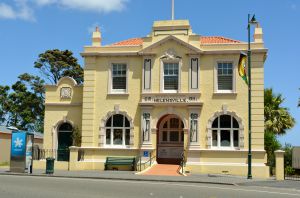
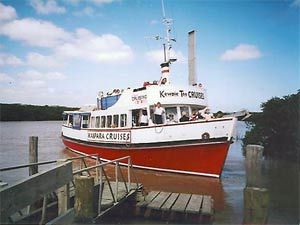
Helensville is a scenic 40 minute drive north of downtown Auckland.
The name of the town is derived from timber miller, John McLeod, building a house for his wife, Helen, in 1862. This house, known by locals and passing travellers, became known as "Helen's villa", which then became Helensville as the town grew.
The local Maori tribes named the area Te Awaroa - Valley of the Long River.
Located by the Kaipara River on the south edge of the Kaipara Harbour, historic Helensville's relaxed lifestyle has plenty to offer both visitors and permanent residents. These include harbour cruising, natural thermal pools at nearby Parakai, fishing, golf, horse riding, restaurants, nearby vineyards, beaches, plus a range of adventure tourism activities.
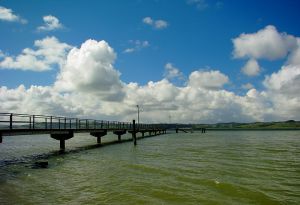
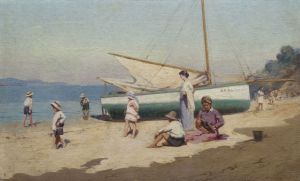
Shelly Beach, on the Kaipara Harbour, has a backdrop of huge old pohutakawa trees and is a popular recreational beach which has a wharf and boat launch. In 1884/85 Aotea, (the former Maori name of Shelly Beach), was the venue for an important meeting between the Maori tribe Ngati Whatua and King Tawhiao of the Waikato. The meeting was to decide whether or not the local people should join the King movement. After much discussion this did not proceed. At this meeting the Council Hall, Te Tiriti, was opened and a four sided memorial and a copy of the Treaty of Waitangi, set under glass on two sides, was erected with Government funds. It was surmounted by a likeness of Queen Victoria and stood there for many years, regarded with great reverence by Maori. Later the buildings and memorial were barged to Batley near Maungaturoto. Gradually the South Head Road improved and as it did more people moved into the district, bringing with them a wealth of new skills. There has been diversification into the farming of goats and alpaca, into growing semi tropical fruit such as macadamia nuts and avocado, persimmon and tamarillo. Beautiful gardens are often open to the public. With farm stays, horse trekking, and multisports in the forest, a wide range of recreational opportunities are opening up.
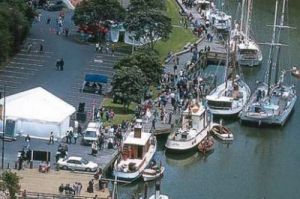
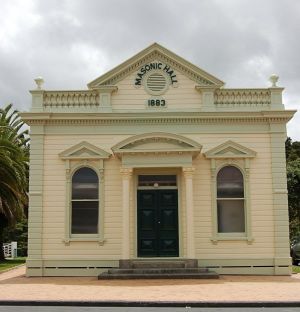
Warkworth is located 57 Km's north of downtown Auckland and acts as a gateway to the stunning beach and wine regions of the east. Marine reserves Goat Island (snorkelling) and Tawharanui are within easy distance from here. Matakana village has one of the most interesting cinemas in New Zealand, along with the amazing Morris & James Pottery, vineyards, artists' studios and cafes. Situated on the banks of the Mahurangi River, Warkworth is a pretty town with an interesting choice of accommodation, shops, cafes and restaurants. There are also some great fish and chips on offer and places to enjoy a picnic on the duck-populated riverbank is a pleasant stopover. There are two regional parks in the area: Tawharanui, which has a magnificent surf beach; and Mahurangi, with its lovely bays and calm beaches.
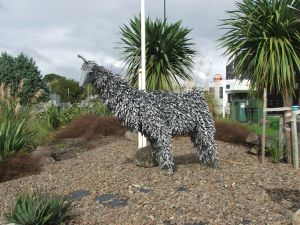
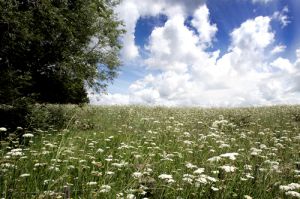
Wellsford is the Auckland region's most northern major settlement. During the 1860s, several ships sailed, carrying English settlers to the settlement of Port Albert. However, life was not easy and many of the original Albertlanders moved inland to the more fertile soils around the Wellsford area.
The town of Wellsford is now a busy country town serving the local farming and horticultural community. Travellers can fill up with fuel, call into the supermarket for supplies and take advantage of the quick service restaurants that line the main street. Kaipara Harbour is to the west t of the town with popular the surf beaches of Mangawhai Heads, Pakiri, Langs Beach and Waipu Cove to the east. The Dome Forest Walkway is another local attraction.
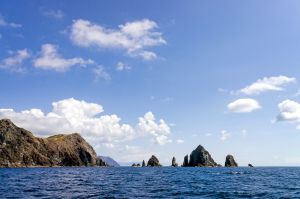
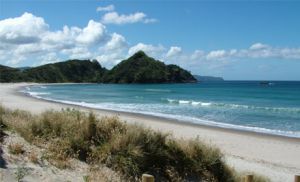
Great Barrier Island is 100km's from downtown Auckland and is the outermost of the Hauraki Gulf's many islands. It is a place of rugged beauty and untouched wilderness, where many boaties enjoy the deep-water harbours & bays. From sea kayaking around the inlets and coves of "the Barrier's" coast, to walking through native rain forest, there are countless ways to explore this adventurer’s paradise. With approximately 1000 permanent residents, you will truly be getting away from everything on New Zealand's fourth largest island. Great Barrier can be reached by car ferry, passenger ferry & by plane.
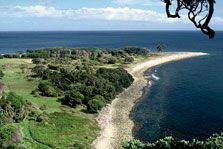
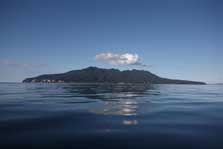
Little Barrier Island lies approximately 80km's north-east of downtown Auckland. As it has been a government-designated wildlife sanctuary since 1897, with rangers the only people allowed to live on the island. Visitors must apply for an entry permit to land on the island. You will be prosecuted is you do not have a permit and attempt to land. The only part of the island open to the public is the area around Te Maraeroa and up to five tracks. To protect the island, the maximum number of visitors permitted to land is 20 per day, although this may vary dependent on the management activities scheduled for the time of your visit. Note: There is no public accommodation on Te Hauturu-o-Toi/Little Barrier Island, and no visitor facilities available. To travel to Little Barrier Island you must: Organise travel with an authorised charter boat Nominate a group leader and accredited supervisor Get an entry permit Complete a biosecurity check Be 12 or over and physically able; Understand what to bring and other safety information.
Many of New Zealands's most endangered species have been resettled here, and everything is done to ensure Little Barrier Island remains predator-free.
Parnell is Auckland's oldest suburb, with European settlement dating from about 1841. Since undergoing a major refurbishment in the early 1970s, it has become one of Auckland's trendiest (and most expensive) suburbs with a wonderful assortment of boutique shops, art galleries, cafes and restaurants.
Nearby, you will find the Auckland Domain, home to botanic gardens and the Auckland Museum, where you can view an awe-inspiring collection of Polynesian art and history.
The Parnell Rose Gardens are very popular with locals and visitors, offering an array of blooms to admire.
Mt Eden is Auckland city's highest volcano at 196 metres high. A 360 degree view of Auckland and its surrounds can be seen from the top of this hill.
At the foot of Mt Eden, you will find Mt Eden village, set in a vibrant suburb 4 km from central Auckland. The village offers a wonderful range of shops, thriving cafes and restaurants.
Ponsonby, one of Auckland's oldest, and now trendiest, suburbs is a mere 2 km west of downtown Auckland. Its locals range from old hippies to millionaires who all seem to happily rub shoulders at the laid back budget Ponsonby Village International Food Court or the many up-market restaurants that run the length of Ponsonby Rd.
Ponsonby Rd stretches from the famous Karangahape Rd (just refer to it as "K Rd" as the locals do!) to Jervois Rd. Both of these streets also have an eclectic range of boutiques, galleries, cafes, bars and restaurants.
Travelling down Franklin Rd you will come to the Victoria Markets, a bustling array of permanent and portable market stalls.
Ponsonby merges into St Mary's Bay, which is home to the southern hemisphere's largest marina, Westhaven, where almost 2,000 boats are moored. Travel a little further towards downtown Auckland and you will come across the waterfront sites of Wynyard Quarter and Viaduct Harbour where you can admire the visiting boats or have a beverage or a meal.
A few minutes ferry ride across the harbour from downtown Auckland, you will find the historic naval seaside suburb of Devonport.
Take a walk along the sandy beaches or treat yourself to the boutique shops, galleries and cafes in this friendly village.
Or...take a walk, or a segway tour, to North Head where you can see the World War 2 gun emplacements and underground tunnels. From the top of North Head and Mt Victoria, views of Auckland City, the islands of the Hauraki Gulf and north to Whangaparaoa Peninsula can be seen.